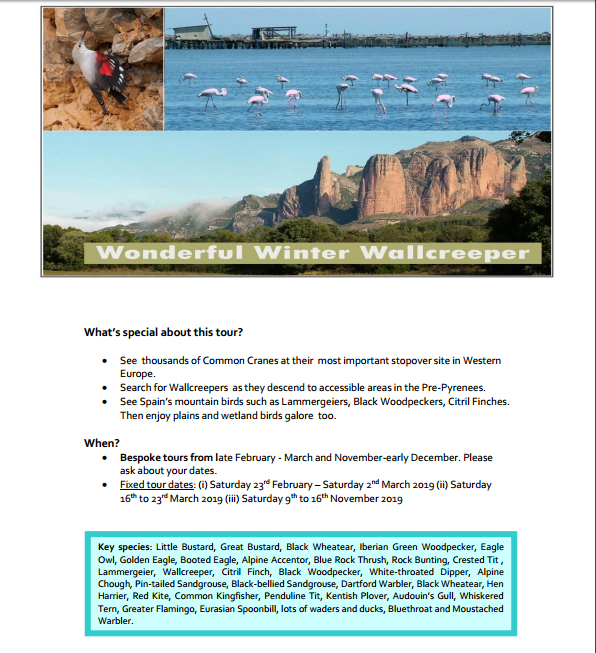Protected: Advent Calendar
Protected: Advent Calendar
Booking.com, Part 2
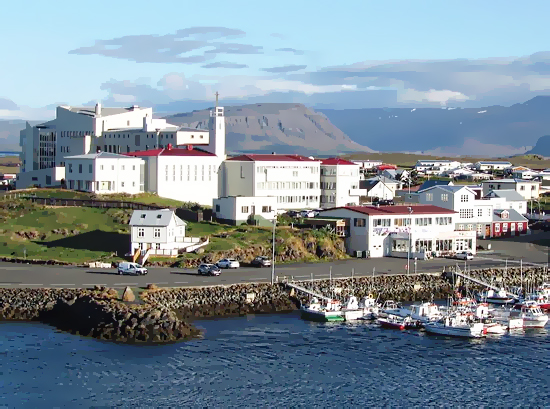
Fransiskus hotel, Stykkisholmur, Iceland
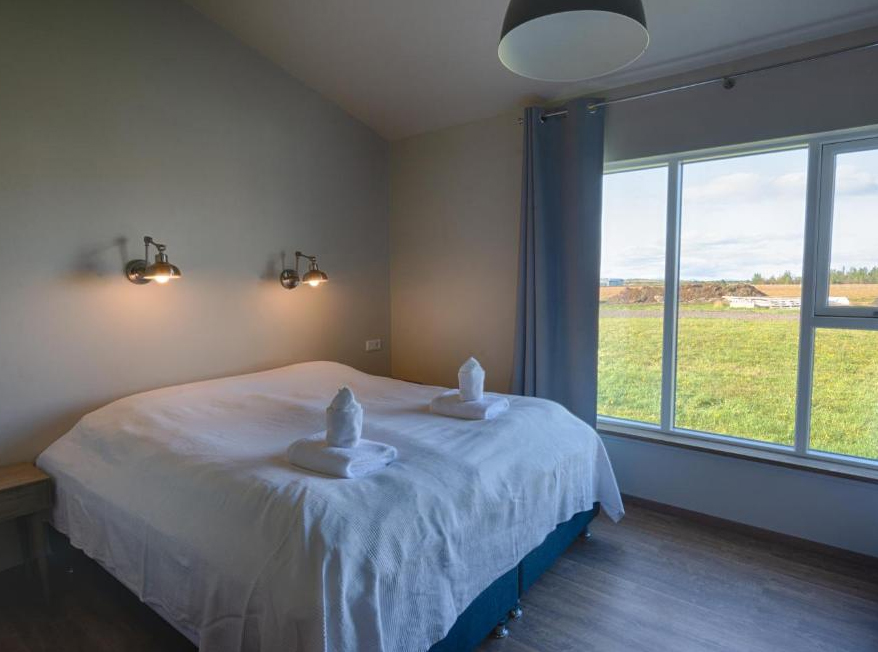
Loas nest hotel, Iceland
The worst
*note that this article does not refer to either of the above establishments, which are very good, and here only to illustrate the article, which we do not want to illustrate with the bad establishment
We had successfully completed the first leg of our delightful autumn Iceland Tour and most of the group had departed from Keflavik airport to head back home to the USA or to the UK. Now it was just Florinda and I, and our favourite clients, M and C. This couple were going to continue with us for another 4 nights, to catch up with the first part of the tour that they had missed by arriving for the tour on a later date.
M and C had been on at least half a dozen private tours with us around Spain and so we were pretty relaxed in each other’s company. This short article is about the place we stayed on the outskirts of Reykjavik for the first “changeover” night, which would have been quite a test for any lesser relationship.
For that one night I had perused the listings on Booking.com and ended up booking us private rooms in a building located on the outskirts of Reykjavik. When we got there the neighbourhood had the look and feel of a depressing crossover between a drive-through suburb and a half-hearted industrial estate.
That was just the outside. On the inside the plumbing and the central heating may well have dated from the Victorian era, after the era had passed, and the pipes and other stuff had been ripped out of houses in the UK to be shipped to Iceland and reinstalled as the cheapest available alternative of the time. That judging by the appearance, the noise and its effectiveness.
The toilet was leaking, as in one of those little runnels of water that you hope you’ve stepped over as it makes its way across the tiled floor to try and escape from the “bathroom”. And worse still, this room was “the” bathroom, because in Iceland en-suite bathrooms were and are, even to this day, far from being a universal concept in guest houses and hotels.
“Breakfast included” they said. It’s just your bad luck if you don’t like cornflakes. Grab yourself some sliced bread and pop it in the toaster, if that group of four hungry youths who came before you have left any. And if there is a toaster.
God it’s getting cold in here and what’s more I knew I shouldn’t have eaten all of that kebab, even if it was the only food we could get our hands on. Now it’s just the thought of that toilet …
“Well it looks like there’s a good thick blanket on the bed,” said Florinda, cheeringly, as we were preparing to say good night to M and C.
“And we can get an early start, and find some good breakfast spot somewhere along the route,” I added.
“What rating would you give your accommodation in Reykjavík?” I was later asked by an email from Booking.
“Please don’t insist,” I thought to myself at first, “I really don’t want to have to write such a negative review”. But then … “Shame on you Booking,” I thought, “for offering such a dive; and shame on me for booking this for M and C.”
So I wrote the review; the only negative one I have ever written for Booking.
Part 1
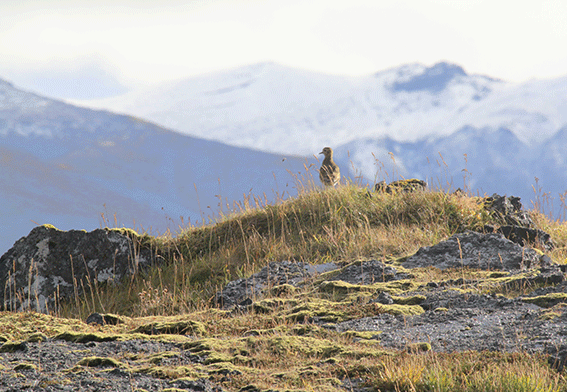
Birding In Spain will be birding in Iceland
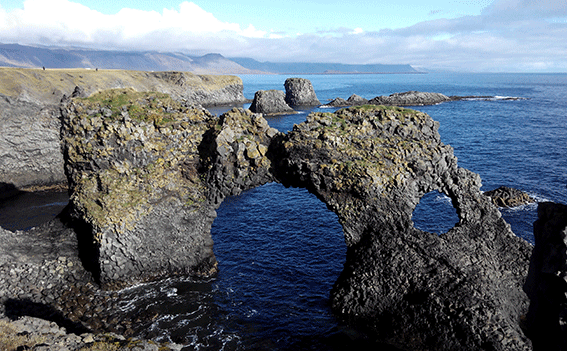
Birding In Spain will be birding in Iceland
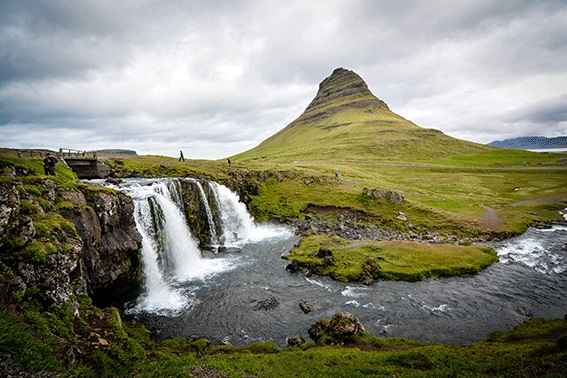
Birding In Spain will be birding in Iceland
Booking.com: the best
“Oh, Iceland, I love Iceland,” he said, “I’ve been there 8 times”.
Like me he was a professional bird guide. He’d been to Iceland 8 times already, and I was close to embarking on my first ever visit. And yet I was conceited enough to believe that my knowledge of Iceland could not be vastly inferior to his. When he asked what our route was to be I proudly informed him that we were starting with a few days in Reykjavik, and then working our way to the south and east of the Iceland, as far as Akureyri in the north, before flying back to Reykjavik.
“It’s not as if there’s that much to see in the west of the island,” I added.
I noticed how he tightened his lips so as not to respond with what he knew, so as not to hurt my feelings with some real knowledge. I noticed, but I ignored it.
The time for our much awaited holiday in Iceland came. First off Florinda and I had spent 3 enjoyable nights in Reykjavik in each other’s company, and our first of two nights at Hvollsvöllur, within a working distance of Iceland’s southern town of Vík, the gateway to the east of the island. The next day we would set out to near Höfn, on the southeast coast of Iceland, before continuing along the main ring road as far as Akureyri, “the capital of the north”.
The evening before our departure from Hvollsvöllur Florinda received a phone call.
“Mrs Vidal, this is Rachel from Booking,” said Rachel, in Catalan, which was our stipulated language of preference with Booking. Nevertheless, we were pleasantly surprised that the representative of such a huge online enterprise actually made the effort to communicate with us in a language which was widely treated as clearly subordinate to Spanish.
Rachel continued, “The accommodation where you are booked for the next two nights has informed us of some serious flooding of the main road, which may impede safe access for you if you are coming from the direction of Reykjavík, which we believe is the case”.
It was the case.
“We believe that the best course would be for you to cancel the accommodation there and to re-route, is that possible? We’ll give you an immediate refund, and any assistance you may need in searching for alternative accommodation elsewhere”.
What could we do? We took Rachel’s advice and the next day we headed back past Reykjavík and to the Snaefellness Peninsula to the west of the island, first off to spend two nights in the hotel we had booked with Booking.com the previous evening.
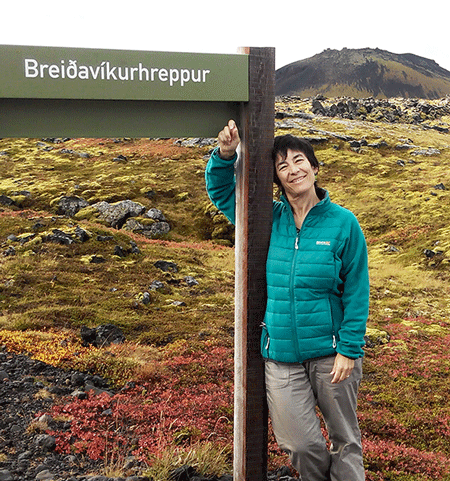
Birding In Spain will be birding in Iceland
And for the wonderful time and unforgettable experiences that we had on our alternative route through the Snaefellness Peninsula and along the west and north of Iceland to Akureyri: all I can think of saying is “Thanks flood!” and “Thanks Booking!”
Tales of Whales Tails from Iceland
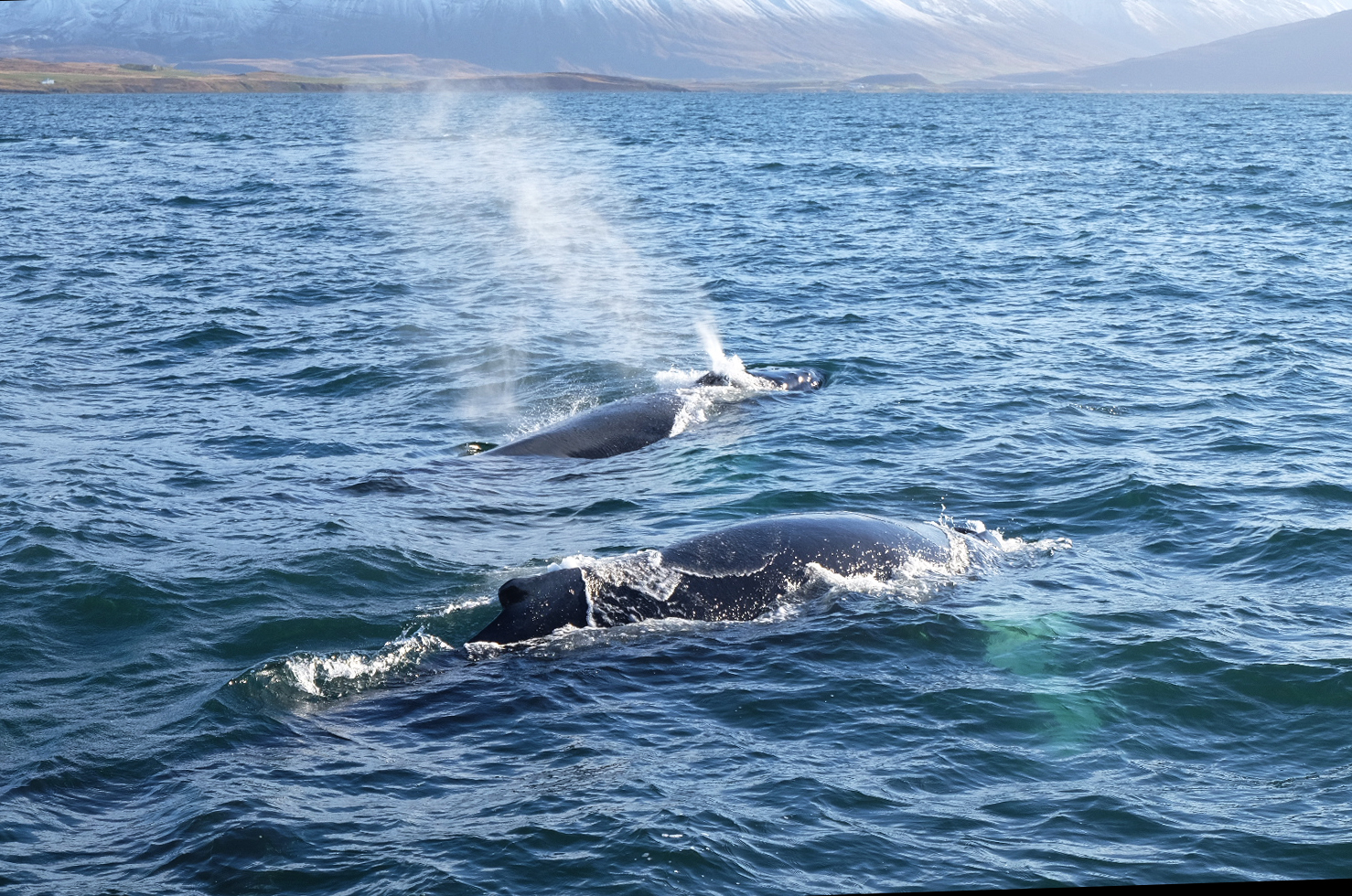
Humpback Whales in Iceland
Being on a boat at the mercy of the waves is most definitely not Florinda’s scene. She’s the most land-lubbing landlubber I have ever met. It probably has something to do with her being born and bred in one of the driest parts of inner Catalonia, where the closest thing to a lake that she encountered in her childhood would have been a circular algae-covered irrigation pool of some 3 metres in diameter, where the frogs came back out of hiding after the boisterous, splashing kids had left.
If it’s not that then it must be something to do with the inner ear.
Anyway, Florinda does not bear up at all well in a swell, or even a gentle sway. So I had serious doubts that she would enjoy our first whale-watching experience in Iceland, even though she assured me with her smile that whatever occurred the overall balance of the experience would be in our favour.
The truth is that we both really wanted to see Humpback Whales. I harboured my doubts that we would, despite the skipper’s obvious confidence and cheer, as privately as I could.
Almost as soon as we careened out of the harbour into the fjord we were on the trail of a few Humpback Whales that the first mate had already observed. For the next hour or so our experience with the whales was an unforgettable one, and it wasn’t until after we had left the whales and the skipper stationed the boat for his passengers to try their hand at a spot of cod fishing that Florinda returned to her dryland roots; the regular rock and sway of the boat was starting to make her feel seasick!
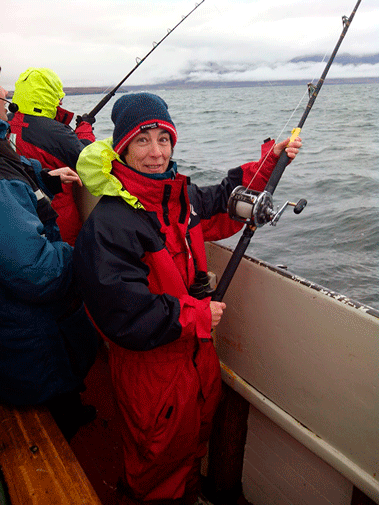
Florinda’s expression of delight
Nevertheless, I managed to get this photo of her just before that moment. The look of childish delight on her face as she hopefully and unsuccessfully casts and fishes for an unsuspecting cod still warms my heart and brings gentle tears of tenderness to my eyes.
Cold December is upon us. We want to help warm it up a bit for our subscribers, with our nature advent calendar.
Every day until Christmas Day (25th December) we will publish an image, mostly birds, but not always, which we hope you will enjoy seeing, along with a motivational phrase in case you are feeling the winter blues.
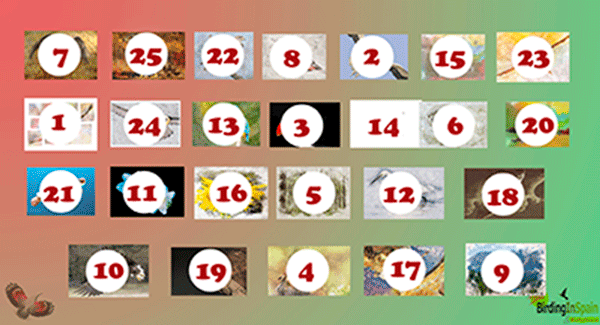
This is a unique feature only available to our subscribers, as each day’s image is password protected. If you are a subscriber the password was sent to you in our last mailing – all you have to do is type it into the space provided and then enjoy. If you are not a subscriber you either miss out or subscribe now – there are no catches!
By the way – if you like any of the images we will send you a full resolution one which you can print out and frame if you like – just send us an email.
One per person only, though, unless you have been on a guided tour with us in the last three years, in which case you are entitled to THREE!
A private autumn tour for Elissa
Elissa, husband Bill, their Godson Tim and his wife Imelda came to us for a short autumn birding break. We designed a tailor-made 4-day birding tour for them to fit into their holiday plans which included a stay in Catalonia, where they would visit Girona, the Costa Brava and Barcelona.
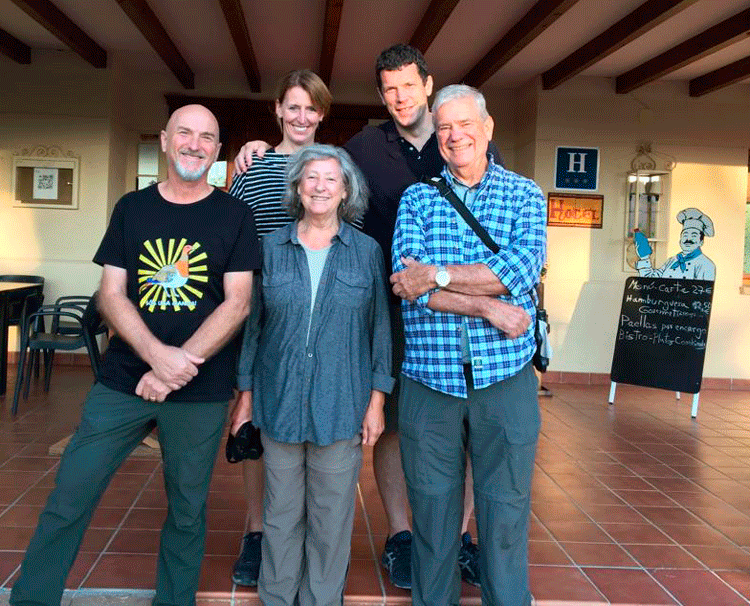
Autumn tour group in front of hotel in Sierra de Guara
We started at a Barcelona airport hotel, and in just over an hour we were birding to the east of Lleida. First off was a Stone-curlew flock of over 100 birds, near a busy roundabout, and then a small flock of Little Bustards, an Iberian Grey Shrike, Eurasian Hoopoe, Wryneck, Whinchat, Common Redstart, and a single Golden Plover.
A brief visit to the Estany d’Ivars allowed us to catch up with a number of ducks, grebes and other wetland birds before we finished the day’s birding with a high note at the border with Aragón: 2 Bonelli’s Eagles in flight with a Golden Eagle and a number of Griffon Vultures – the first of many.
We spent the second day exploring the tranquil Sierra de Guara. In addition to the magnificent scenery there were some great looks at stunning birds such as the Lammergeier. We also clocked up a couple of Lesser Spotted Woodpeckers, numerous Red Kites, a Golden Eagle, a Firecrest and the surpise of the day – a Wallcreeper!
For our third day we headed to the Pyrenees and actually set a foot in France. There wasn’t much there in the way of birds though, although we discerned both Alpine and Red-billed Choughs through the scope, more Lammergeiers, a single Honey Buzzard on migration and a pair of Golden Eagles, among others.
For our last day we headed back to Lleida for them to catch the fast train to Girona, to continue with their visit, although without the focus on birds. Just enough time to find a Black Wheatear, Alpine Swifts, Thekla’s Larks, Blue Rock Thrush and Rock Sparrow near the plains and then a surprise sighting of 2 Black Storks in a large migratory flock of White Storks. Then, at Lleida it was time to say our farewells.
Elissa later informed me that they had tried Ratafia on my recommendation while in Girona and were very happy that they did!
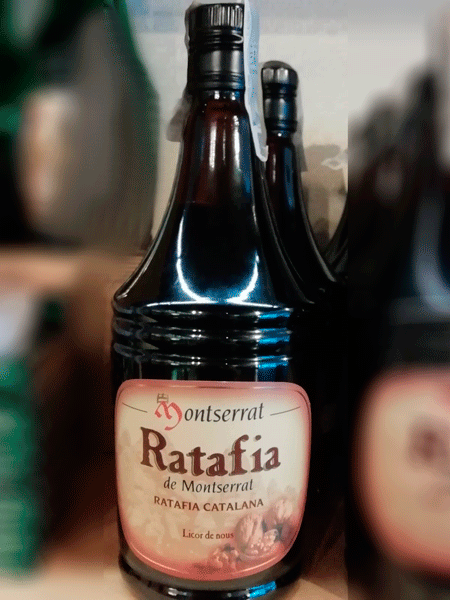
Ratafia – an excellent Catalan liqueur based on green walnuts
At the break of dawn on 8th October Mary, Clive and I went to the Rio Salado in Conil de la Frontera for a spot of pre-breakfast birding. That way we’d make room for the hearty breakfast they served at our hotel, and we’d make the most of the best time of the day.
It was not quite light enough to bird well with the naked eye when we got there, although things were clearer through our binoculars. There were Sanderlings and Common Ringed Plovers, mostly on the far bank, and a single Greenshank and Black-winged Stilt. A black cat made a bird move, and we saw that it was a Stone Curlew. Now, with Stone Curlews at this time of the year, once you manage to focus on one it’s worth checking around for some more, which is what I did. Sure enough, there were more in a dry paddock beyond, and in all we counted over 60 Stone-curlews before moving on by foot towards the bridge that spanned the “river” (really not much of a river, all told).
Clive is a retired engineer, and not a birder, so he was quite pleased to give the footbridge a good going over while Mary and I continued looking at the waders. The next moment I was very glad that I was not alone, because I may eventually have convinced myself that I had dreamt it all up.
“Hey Mary! Have a look at this really pale Ringed Plover with really reddish legs!” I said. She immediately joined me and honed in on the bird which was only about 20 metres away and, now with the sun on our backs , we had no difficulty in seeing and comparing to the several Ringed Plovers around it.
The bird in question was, of course, the Piping Plover of the title, although at the time I had no idea of what it could be, only that it wasn’t anything I’d seen before. Could a leucistic Ringed Plover be discarded? That was the only possibility that I held onto briefly, in order not to get overexcited about a bird which just had to be a rarity. But what? Semipalmated Plovers look very similar to Common Ringed Plovers; Kentish Plovers have dark legs and what’s more, I was very familiar with all three “ringed” plover species of Europe.
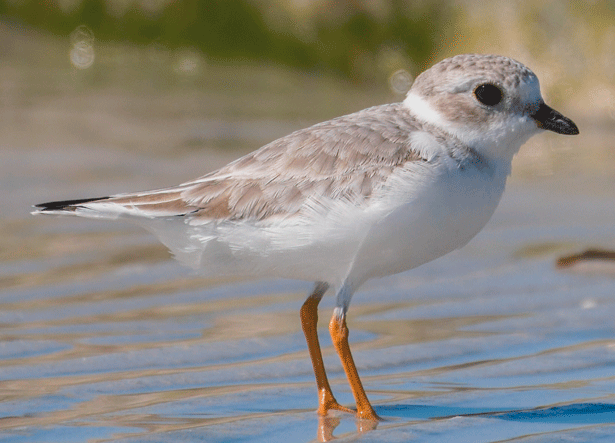
I was thinking that it must be a bird from across the Atlantic, but even by going through the Collins bird guide in my head there was nothing that I could come up with.
Mary and I watched the bird in excellent light and down to about 15 metres for some 15 minutes before it occurred to me to try and get a photo. As I started trying to hold my phone to my scope’s lens the bird flew off upriver, and landed opposite where we had parked. We were now looking into the sun at a distant bird, and I still didn’t know what it was. So, the solution? Let’s go birding and get it on the way back.
“On the way back”. How many times have I said that in my professional career and what is the sorry – very sorry – success rate of such a ploy? Just doesn’t seem to work, not for me anyway.
The half hour birding was pretty good: Northern Wheatears, 2 Tawny Pipits, Yellow Wagtails all on migration, Audouin’s Gull, Red-legged Partridge, Hoopoe and a few other bits and pieces.
When we got back to the bridge the scene was very different from how we had left it. There were four men clad from head to toe in white PPE and green wellingtons, doing their best to remove all the dead fish they could find from the river on both banks. Of course there were almost no waders to be seen, let alone our mystery bird.
I kept my calm as best I could and delayed the internet search for our bird until I had a spare moment after breakfast. It didn’t take me long: I quickly found a photograph of a non-breeding Piping Plover with the reddish legs, pale sandy plumage, stubby black bill and large eye that we had both commented on while we still had the bird in front of us. When I showed the image to Mary she had no doubts either.
Piping Plover? Good grief! Surely that’s a first for Spain? If not for Europe …
